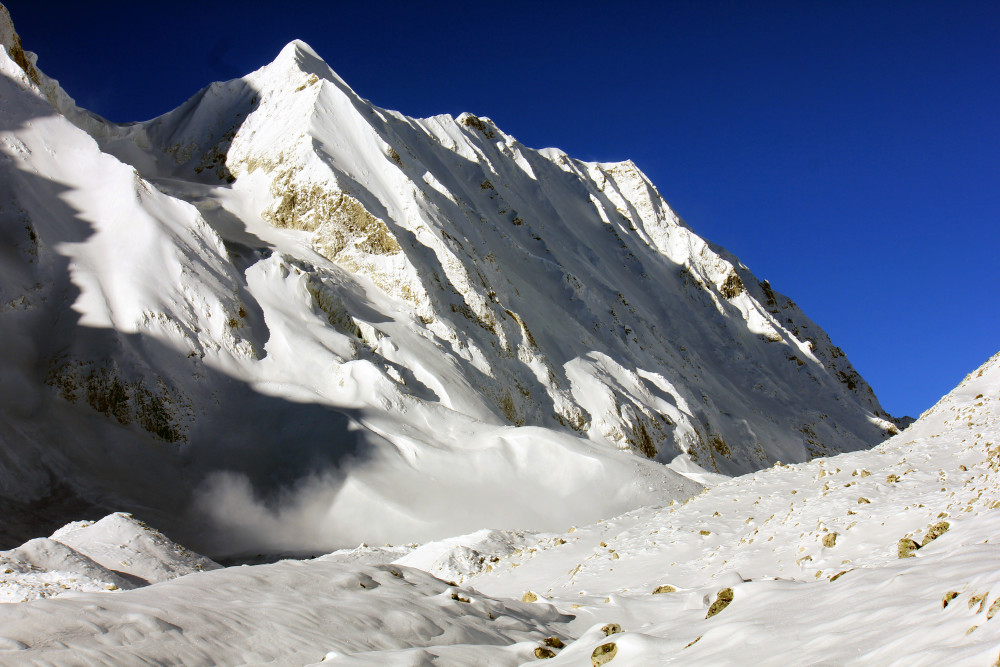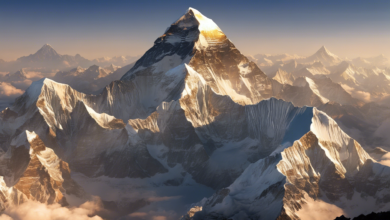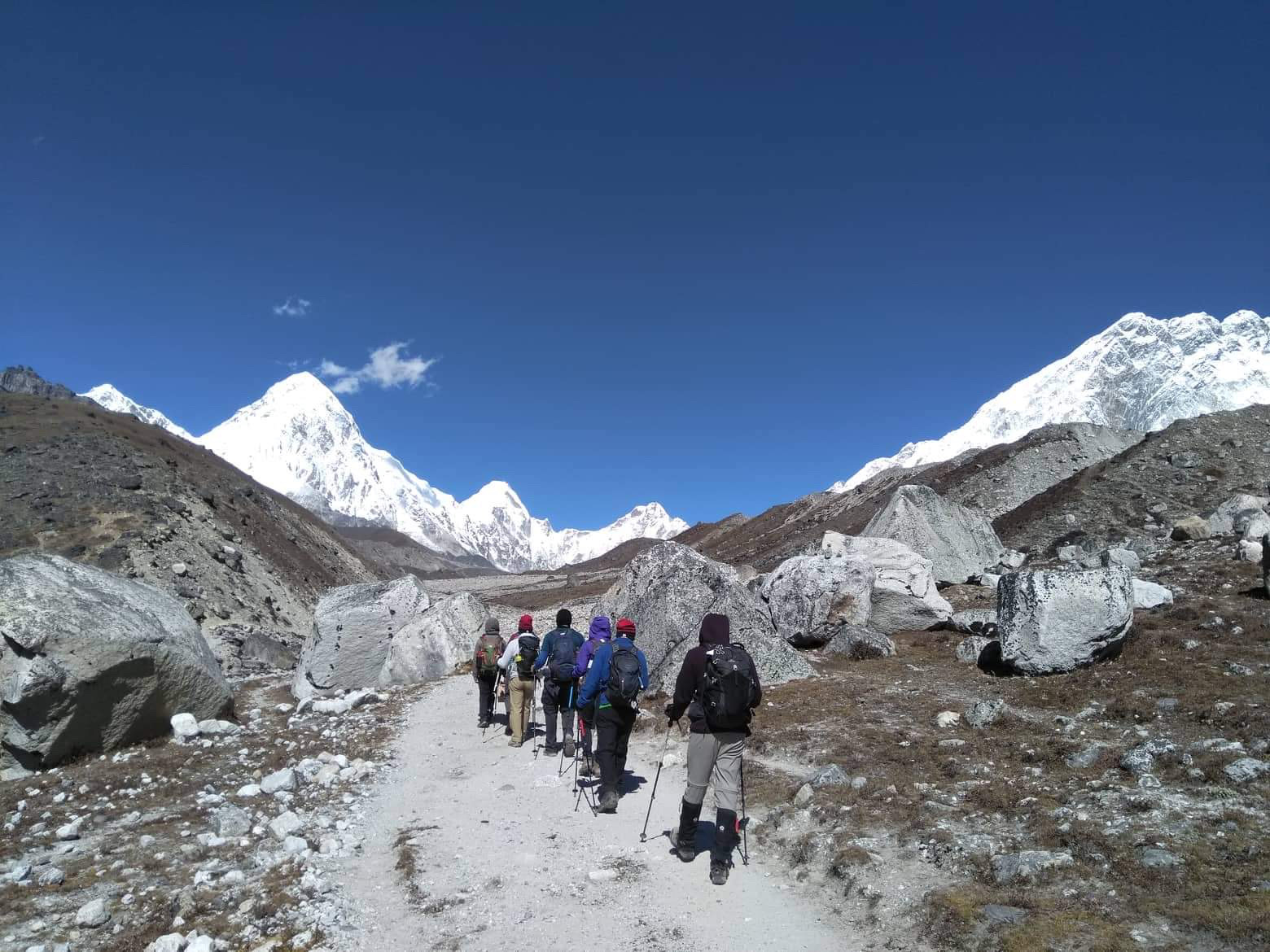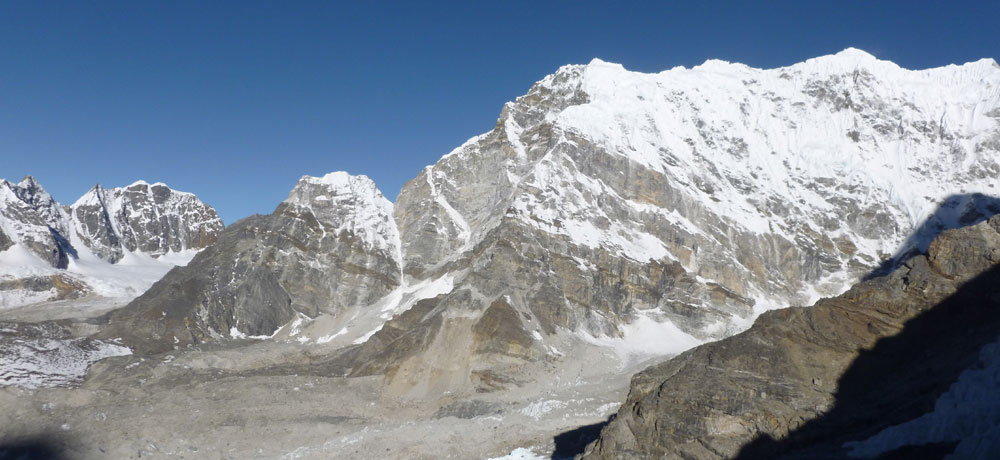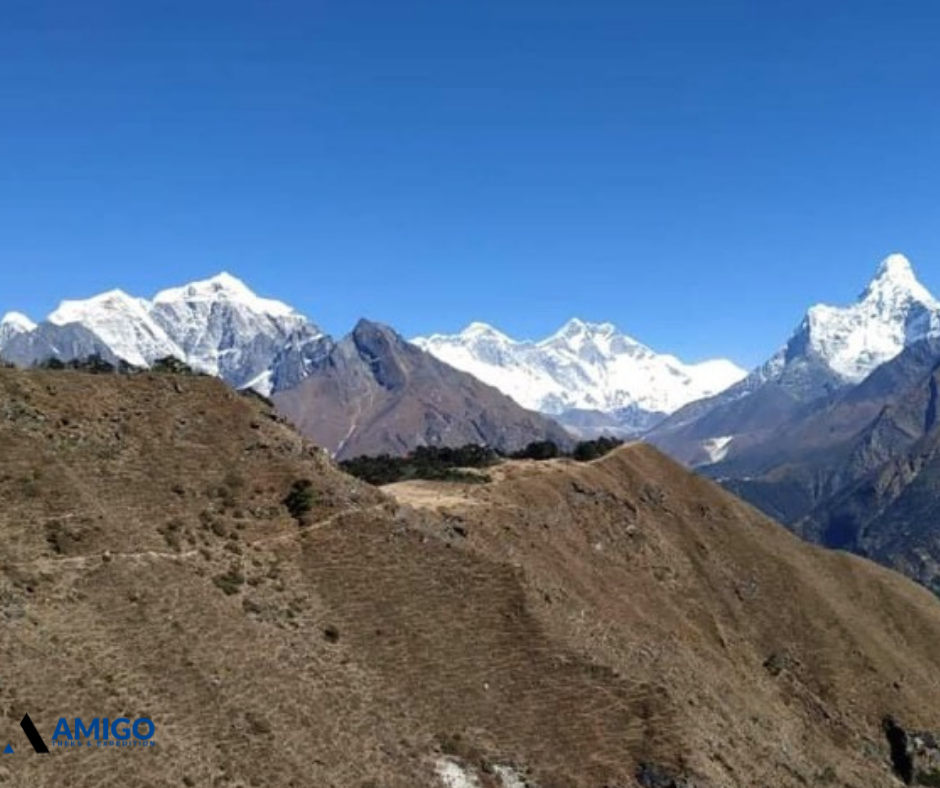Article
Everest Base Camp Helicopter Tour 2025-2026
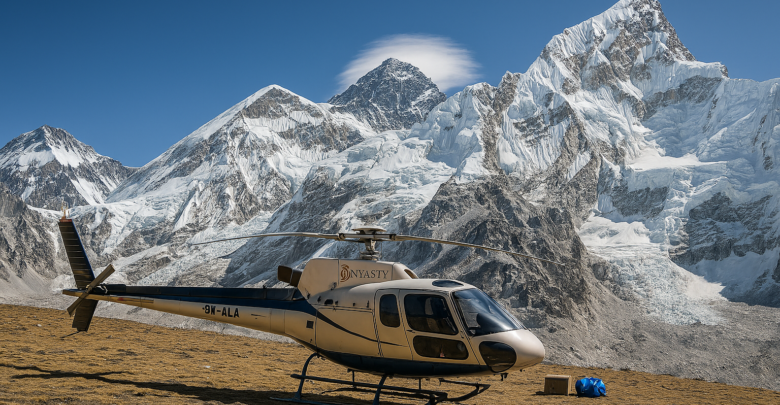
An everest helicopter tour transforms a grueling two-week trek to Everest Base Camp into just a single day of breathtaking adventure. While trekking has its own charm, helicopter tours offer you an unmatched aerial perspective of the majestic Himalayas without the physical demands of high-altitude hiking.
Mount Everest Base Camp ranks as the third most desirable travel destination worldwide according to Forbes’ 2021 list. The everest base camp helicopter tour centers around landing at Kala Patthar (5,644 meters), a vantage point offering clear, awe-inspiring views of Mount Everest and surrounding peaks. Despite the considerable price tag—tours can range from $1,300 to $9,000 depending on your preferences —the experience delivers incomparable panoramas of the Himalayan range that even traditional trekking cannot match.
For those concerned about altitude sickness, these tours are thoughtfully designed. The brief time spent above 5,000 meters significantly reduces your likelihood of experiencing altitude-related illness, though it’s important to note that symptoms like headache, nausea, and dizziness can still affect travelers in high-altitude environments.
Throughout this guide, you’ll discover everything you need to know about planning your 2025-2026 everest heli tour, from routes and pricing to safety considerations and the best times to fly for those perfect mountain views.
What is the Everest Base Camp Helicopter Tour?
The Everest Base Camp helicopter tour offers a gateway to experience the majesty of the world’s highest mountain without trekking for two weeks. This exhilarating aerial adventure compresses what would normally be a lengthy expedition into a single day of spectacular mountain views and unforgettable experiences.
Overview of the Everest heli tour experience
The Everest heli tour is essentially a day trip that typically lasts 4-5 hours in total. Your journey begins in Kathmandu, flying over deep valleys, dense forests, shimmering glaciers, and charming Sherpa villages en route to the Everest region. As you soar through the sky, you’ll witness breathtaking panoramas of the eastern Himalayan peaks including Lhotse, Ama Dablam, Island Peak, Changtse, Pumori, and Nuptse, with the crowning glory being Mount Everest itself.
During this aerial adventure, you’ll fly over key landmarks of the Khumbu region, including Monjo, Namche Bazaar, Tengboche, and Pangboche. The helicopter doesn’t actually land at Everest Base Camp due to current regulations and safety concerns. Instead, it hovers nearby, usually making a landing at the base of Kala Patthar, where you can step out briefly to soak in the magnificent surroundings.
This tour is ideal for those who:
- Have limited time in Nepal
- Lack the physical capacity for a demanding trek
- Want to avoid the challenges of high-altitude walking
- Seek a luxurious yet adventurous Himalayan experience
Difference between trekking and helicopter tour
Unlike the traditional Everest Base Camp trek that demands 14 days of physical exertion, the helicopter tour condenses this experience into just 4-5 hours. Furthermore, the helicopter tour eliminates the physical challenges of trekking at high altitudes, making it accessible to almost anyone regardless of fitness level.
When trekking, you experience the journey on foot, gradually acclimatizing to increasing elevations. In contrast, the helicopter tour provides a bird’s-eye perspective that even trekkers don’t get to enjoy. You’ll witness the entire landscape from above – glaciers, rivers, remote villages, and mountain ranges – all in a single flight.
Another key difference is the risk of altitude sickness. Since you’re only exposed to high elevations for a brief period (approximately 5-10 minutes at Kala Patthar), the helicopter tour significantly reduces your chances of experiencing altitude-related illness. However, the helicopter does carry supplementary oxygen bottles that you can use if necessary.
Popular landing points: Kala Patthar and Hotel Everest View
The most notable landing spot on the tour is Kala Patthar, situated at an impressive 5,644 meters (18,517 feet). This rocky hill offers the most expansive and clear views of Mount Everest and surrounding peaks. Due to the thin air at this altitude, your time here is limited to approximately 5-10 minutes to prevent altitude sickness.
After Kala Patthar, the helicopter descends to Hotel Everest View, perched at 3,880 meters (12,729 feet). Recognized in the Guinness Book of World Records as one of the highest-placed hotels in the world, this stop allows you to enjoy a delicious breakfast with a front-row view of Mount Everest. You’ll typically have around 45 minutes here to relax, dine, and take in the spectacular 360-degree mountain panorama.
The combination of these landing points gives you both the thrill of standing at high altitude near Everest and the comfort of enjoying the views in a more relaxed setting – truly the best of both worlds.
Everest Helicopter Tour Route and Itinerary
Your epic adventure begins at dawn as you step into a specialized high-altitude helicopter ready to conquer the Himalayan skies. The Everest helicopter tour follows a meticulously planned route designed to maximize both safety and spectacular views.
Kathmandu to Lukla: The gateway to Everest
The journey commences with an exhilarating 30-45 minute flight from Kathmandu to Lukla. As you soar above the Kathmandu Valley, you’ll witness a dramatic transformation of landscapes – from historic city views to lush green hills and finally the rugged mountain terrain. The flight offers first glimpses of numerous Himalayan peaks.
The landing at Lukla’s Tenzing-Hillary Airport (2,860m) is an adventure in itself. Often referred to as one of the world’s most dangerous airports, it features a short runway with challenging approach angles nestled among mountains. Here, your helicopter will make its first stop for refueling, a brief 10-12 minute pause before continuing the journey.
Lukla to Kala Patthar: Scenic flight and landing
After refueling, your helicopter ascends toward the heart of the Everest region, following the pristine Dudh Koshi River valley. This segment offers incomparable views as you fly over charming Sherpa villages including Namche Bazaar, pass the ancient Tengboche Monastery, and continue over Pheriche.
The landscape transforms dramatically as you approach the Khumbu Glacier and Everest Base Camp. Most tours include a flyover of Everest Base Camp rather than landing there. The helicopter then proceeds to Kala Patthar (5,545m), where you’ll experience a brief landing of approximately 10-15 minutes. This rocky outcrop offers a jaw-dropping 360-degree panorama of Mount Everest and surrounding peaks including Nuptse, Pumori, Changtse, and Lhotse.
For safety reasons, your time at this altitude is strictly limited to prevent altitude sickness, so prepare your camera for quick yet unforgettable shots.
Breakfast at Hotel Everest View
Following your high-altitude adventure, the helicopter descends to Syangboche (3,880m) for the tour’s highlight – breakfast at the legendary Hotel Everest View. Recognized in the Guinness World Records as one of the highest-placed hotels globally, this stop allows you to catch your breath while dining in extraordinary surroundings.
The breakfast experience itself is remarkable – enjoy freshly baked pastries, aromatic teas, and a choice of international classics or traditional Nepali specialties. All this while Mount Everest stands majestically before you through panoramic windows. The breakfast typically costs around Npr 4500 per person, a worthwhile splurge for dining with such incomparable views.
Return journey and total duration
After approximately an hour at Hotel Everest View, your helicopter begins the return journey, first stopping at Lukla for final refueling. Then you’ll fly back to Kathmandu, completing a journey that typically takes 4-5 hours in total.
The return flight offers a different perspective of the landscapes you passed earlier – verdant hills, cascading waterfalls, remote villages, and the gradual transition back to civilization. Many travelers report this final leg as a perfect opportunity for reflection on the breathtaking experiences of the day.
Throughout the entire journey, professional pilots navigate challenging conditions with expertise, ensuring both safety and spectacular views that would otherwise require weeks of trekking to witness.
Cost and Booking Options for 2025–2026
Planning your budget for an everest helicopter tour requires understanding the various pricing options available. The financial investment varies based on your preferences and group size, but delivers extraordinary value for experiencing Mount Everest’s majesty without weeks of trekking.
Everest helicopter tour price for group vs private
Group sharing tours are the most economical option, with prices for 2025-2026 ranging from USD 1300 to USD 9000 per person. The cost typically decreases as your group size increases:
- Solo travelers: Approximately USD 1500 (Sharred Ride which doesent land at kalapatthar)
For those seeking exclusivity, private charters typically cost between USD 4500-9000 for the entire helicopter (accommodating up to 5 passengers). This premium option provides complete flexibility regarding departure times and stopover durations.
Seasonal pricing and best time to book
Tour prices fluctuate throughout the year based on weather conditions and tourist demand. Peak seasons—March to May (spring) and September to November (autumn)—generally command higher prices but offer the clearest views and most reliable flying conditions.
Conversely, off-season periods like monsoon (June-August) or winter (December-February) often feature discounted rates. Moreover, booking 3-4 weeks in advance for peak season tours is advisable to secure your preferred date.
What’s included and excluded in the package
Standard inclusions for most tours encompass:
- Hotel pickup/drop-off in Kathmandu
- Helicopter flight with experienced pilots
- Required permits and landing fees
- Airport taxes and government charges
- Emergency oxygen supply
Notable exclusions typically include:
- Breakfast at Hotel Everest View (approximately NPR 4500
- Travel insurance covering high-altitude flights
- Gratuities for pilots and ground crew
Tips for saving on your Everest heli tour
To maximize value on your investment:
- Book group sharing flights—the most significant cost-saving measure
- Consider shoulder seasons (early March or late November) for better rates without compromising too much on visibility
- Remain flexible with your dates, as weekday flights (Tuesday-Thursday) sometimes offer better availability and pricing
- Book with local operators who might provide special discounts or more competitive rates
Additionally, some companies offer combination packages that include transportation, accommodation, and helicopter tours, providing better overall value if you’re planning an extended stay in Nepal.
Safety, Altitude, and Health Considerations
While soaring above the Himalayas delivers unmatched views, understanding safety considerations is crucial before booking your everest helicopter tour. Let’s explore what you need to know about staying safe and healthy during this high-altitude adventure.
Is the Everest helicopter tour safe?
The everest base camp helicopter tour boasts an excellent safety record, with no reported issues on commercial flights over the past two decades. This impressive record stems from stringent safety protocols. Reputable operators employ high-altitude trained pilots with over 3,500 flights of experience, maintain helicopters to international standards, and prioritize passenger well-being above all else.
Nevertheless, flying in mountainous regions carries inherent risks. Always select operators with proven safety records and proper certification from the Civil Aviation Authority of Nepal (CAAN).
Altitude sickness: symptoms and prevention
Even during brief high-altitude stops, your body might react to the reduced oxygen levels. Acute Mountain Sickness (AMS) can affect anyone regardless of fitness level, with common symptoms including:
- Headache, nausea, and dizziness
- Shortness of breath and fatigue
- Reduced coordination
Fortunately, your exposure at high altitude is minimal—typically just 10-15 minutes at Kala Patthar (5,644m). To minimize risks, stay well-hydrated, avoid alcohol beforehand, eat light meals, and consider consulting your doctor about preventive medications
Oxygen availability and emergency protocols
Throughout the flight, your safety remains paramount. All everest helicopter tours include supplemental oxygen as a standard feature. If you experience discomfort or altitude symptoms, immediately inform your pilot—they’ll provide an oxygen mask connected to onboard cylinders.
For emergencies, pilots follow established protocols including oxygen administration, rapid descent to lower altitudes, or arranging medical assistance if necessary.
Weather conditions and flight cancelations
Weather ultimately determines whether your mount everest helicopter tour proceeds as planned. Clear skies and minimal wind are essential for safe navigation. Morning flights typically offer optimal conditions.
Should fog, strong winds, or precipitation develop, your pilot may need to delay, reschedule, or cancel the flight. Most companies offer either flexible rescheduling or full refunds (minus administrative fees) for weather-related cancelations.
Remember that postponements prioritize your safety—unpredictable Himalayan weather demands respect and patience.
Best Time to Visit and What to Pack
Choosing the right season for your everest helicopter tour directly impacts the quality of your experience. The majestic Himalayas reveal their true splendor only under specific conditions.
Ideal months for clear views and safe flying
Spring (March to May) and autumn (September to November) offer the most spectacular conditions for helicopter tours. Specifically, these months provide stable weather with crystal clear blue skies, ensuring unparalleled visibility of Mount Everest and surrounding peaks.
Spring treats you to diverse colors with blooming wildflowers, white snow-capped mountains, and green valleys. Alternatively, autumn presents fresh air and crystalline skies after the monsoon season washes away dust and haze. Both seasons minimize flight cancelation risks.
Winter (December-February) delivers good mountain visibility with fresh snow creating a magnificent wonderland effect, although colder temperatures prevail. Importantly, summer/monsoon (June-August) is least recommended due to cloud cover and poor visibility.
Clothing essentials for high-altitude conditions
Strategic layering is essential for Everest’s unpredictable weather:
- Base layer: Moisture-wicking fabrics like merino wool to keep you dry
- Insulating layer: Fleece or down jacket for warmth
- Outer shell: Windproof and waterproof jacket for protection
- Accessories: Insulated waterproof gloves, warm hat, UV-protective sunglasses, and moisture-wicking socks
Consequently, comfortable hiking boots with ankle support remain crucial even for brief landings.
Camera gear and personal items to bring
The stunning Himalayan vistas deserve proper photography equipment:
- Camera: DSLR or mirrorless camera for high-quality images
- Lenses: Wide-angle (24-70mm) for landscapes and telephoto (70-200mm) for distant peaks
- Essentials: Extra batteries (cold depletes them quickly), memory cards, and polarizing filter
- Personal items: Sunscreen (high SPF), lip balm, water bottle, and basic first-aid kit
Early morning flights (6:00-9:00 AM) typically provide the clearest air, lighter winds, and golden hour lighting for optimal photography.
Conclusion
The Everest helicopter tour stands as a remarkable alternative to traditional trekking, offering you breathtaking aerial views of the world’s highest peak without weeks of physical exertion. This extraordinary adventure compresses a 14-day journey into just 4-5 hours of pure Himalayan magic, therefore making it accessible to travelers with limited time or physical capabilities.
Standing at Kala Patthar with Mount Everest towering before you creates memories that last a lifetime. Additionally, enjoying breakfast at the legendary Hotel Everest View provides a perfect balance of comfort and adventure. Though priced between $1300-$6000 per person for group tours, the value far exceeds the cost when you consider the once-in-a-lifetime perspectives gained.
Safety remains paramount throughout your journey, with experienced pilots, supplemental oxygen, and carefully planned itineraries minimizing altitude sickness risks. Spring (March-May) and autumn (September-November) undoubtedly offer the most reliable flying conditions and clearest mountain views, though winter brings its own snow-draped charm.
The Himalayas reveal their true magnificence from above – glaciers, remote villages, and soaring peaks unfold beneath you in ways ground-based trekkers never witness. After experiencing this aerial adventure, you’ll understand why Everest Base Camp ranks among the world’s most desired destinations. Amigo Treks and Expedition specializes in crafting these unforgettable Himalayan experiences, ensuring your safety while delivering personalized service that makes your journey truly exceptional.
Whether you choose a shared tour or private charter, pack your camera, dress in layers, and prepare for an adventure that transforms how you see the world’s highest mountains. The Everest helicopter tour awaits, ready to show you Nepal’s crown jewel from perspectives few travelers ever witness.
Key Takeaways
Experience Mount Everest’s majesty without the physical demands of a two-week trek through this comprehensive helicopter tour guide for 2025-2026.
• Transform weeks into hours: The Everest helicopter tour compresses a 14-day trek into just 4-5 hours, making Everest accessible to anyone regardless of fitness level.
• Budget wisely for maximum value: Group tours cost $1300-$1500 per person while private charters run $4000-$9000 total, with spring and autumn offering the best weather conditions.
• Safety comes first at altitude: Brief 5-10 minute stops at Kala Patthar (5,644m) minimize altitude sickness risks, with supplemental oxygen available throughout the flight.
• Time your visit strategically: March-May and September-November provide crystal-clear skies and stable weather, ensuring optimal mountain visibility and fewer cancelations.
• Pack smart for high-altitude conditions: Layer moisture-wicking base layers, insulating fleece, and waterproof outer shells, plus bring quality camera gear for once-in-a-lifetime shots.
This aerial adventure offers unparalleled perspectives of the Himalayas that even traditional trekkers never witness, combining the thrill of standing near Everest with the comfort of breakfast at the world’s highest hotel. The investment delivers extraordinary value for experiencing Nepal’s crown jewel from perspectives few travelers ever see.
Everest Base Camp Helicopter Tour 2025-2026
The Everest Base Camp Helicopter Tour compresses a two-week trek into a single day of breathtaking aerial adventure, offering unmatched views of the majestic Himalayas without the physical demands of high-altitude hiking.
Key Highlights
- Duration: Approximately 4-5 hours, starting from Kathmandu and flying over the Everest region, including a brief landing at Kala Patthar (5,644m) for spectacular views and a stop at Hotel Everest View for breakfast.
- Cost: Group tours range from $1,300 to $1,500 per person; private charters cost $4,000 to $9,000 for up to 5 passengers.
- Best Time: Spring (March-May) and Autumn (September-November) for optimal weather and visibility.
- Safety: High-altitude trained pilots, supplemental oxygen, and strict safety protocols minimize risks.
- Ideal For:
- Travelers with limited time
- Those unable to undertake a demanding trek
- Individuals seeking a luxurious yet adventurous experience
Tour Route
- Kathmandu to Lukla: Flight over diverse landscapes, landing at Lukla for refueling.
- Lukla to Kala Patthar: Scenic flight over Sherpa villages and key landmarks, brief landing at Kala Patthar.
- Hotel Everest View: Breakfast with panoramic
00 for the entire helicopter, accommodating up to 5 passengers. Prices may vary based on the season and specific itinerary.
Q2. How long does the Everest helicopter tour take? The entire tour usually lasts about 4-5 hours, including the flight time from Kathmandu, brief stops at key locations like Kala Patthar, and breakfast at Hotel Everest View. This compact timeframe allows you to experience the majesty of Everest in a single day.
Q3. Is the Everest helicopter tour safe for tourists? Yes, the tour is generally considered safe. Operators employ experienced high-altitude pilots, maintain helicopters to international standards, and carry supplemental oxygen. However, as with any mountain flight, there are inherent risks, and weather conditions can affect flight plans.
Q4. When is the best time to take an Everest helicopter tour? The ideal times are spring (March to May) and autumn (September to November). These seasons offer the clearest skies, stable weather, and best visibility of Mount Everest and surrounding peaks. Early morning flights typically provide optimal conditions.
Q5. What should I pack for an Everest helicopter tour? Pack warm, layered clothing including a waterproof outer shell, gloves, and a warm hat. Don’t forget sunglasses, sunscreen, and a camera with extra batteries. Some operators provide down jackets, but it’s best to check in advance. Comfortable shoes are essential for brief landings.



